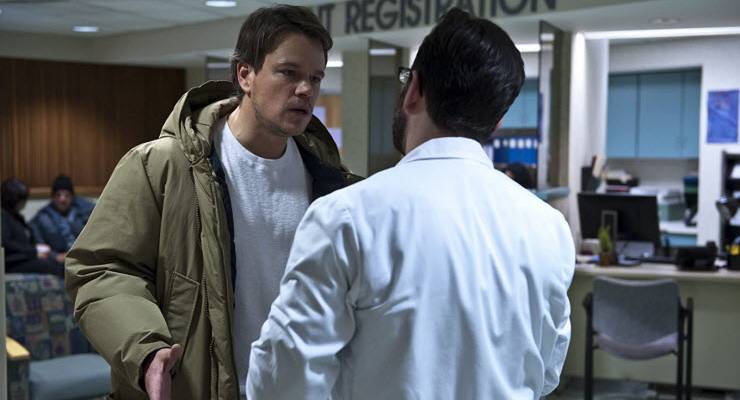
World-disrupting, unspeakable-death-toll-accruing, hunker-down-and-sanitise-everything-and-everyone events are fortunately few and far between. Rare enough, certainly, to make something like COVID-19 seem like irrefutable filmmaking fodder.
With too many creatives at home with Tiger King and the pandemic as the only things to talk about, film and TV incarnations of this period of respiratory malady seem foretold.
The machinations of Hollywood are arguably random: if there were a true template for success we’d see far more blockbusters and far fewer of the flops that constitute the industry norm.
But there are nonetheless some trends in what gets produced, and certainly world incidents of the “remembering where you were when you found out” caliber, or those that prompted you to question your safety/sanity/sense of self, provide clues to the probable paths of Hollywood in the coming years.
The post-9/11 pop culture universe provides useful insight in conjuring predictions. While references to the attacks are detectable in nearly two decades of media, the three films specifically focused on the incidents themselves were United 93, Flight 93 and World Trade Center, all released in 2006.
They took half a decade to come out and were largely viewed and dismissed as literal — and forgettable — event retellings.
Such stylised reenactments, while filling a confected niche in the market for a visual encapsulation of something timely and traumatic (hardly necessary in the age of social media and 24-hour news) are rarely juggernauts.
They’re often made on the cheap and suffer from the hurried skirmish to be released first. It’s also rare that audiences are clambering to pay to be revictimised by a story they experienced firsthand.
Further, such productions generally can’t offer us new sensory experiences to justify the expense. We go to the cinema to escape and, notably, to enjoy something we can’t easily get at home — be it 3D, or blockbuster special effects, or seeing famous folks on a screen the size of a small country. A dramatised version of coronavirus is therefore likely to hold limited appeal.
Add to this, COVID-19 has uniquely led to most of us being cooped up in our homes with little else to do but manically probe and prod the pandemic and experience it endlessly through memes and cable news and our social media feeds.
We’ve already spent weeks bathing in disease — more coronavirus isn’t likely to be something we’ll be salivating for once cinemas reopen and the show is back in business.
Instead of a slew of material about a specific event, it’s more common to attempt to capture the zeitgeist — to tap into what audiences are feeling as a result of a happening — and channel that into media productions.
As early as November 2001, White House advisers and Hollywood executives met to discuss an industry response to 9/11. What followed was a decade of films largely eschewing Twin Towers tales altogether, and which instead showcased American patriotism and military might.
The spirit of the age — real or mass-mediated or a little of both — was all about reasserting Western world dominance. It was during this time that a cultural preoccupation with superheroes was (re)born, and when a slew of Cold War narratives (think Spielberg’s War of the Worlds) and 1970s horror films got retrofitted as vehicles to channel our collective fears about terrorism without ever actually mentioning it.
During the early days of AIDS there were some timely offerings — like 1985’s Buddies — but much more common was the presentation of diffuse fears of blood-borne illness.
The time was ripe for the 1986 remake of The Fly — a lesson in degradation and negative transformation of the human form — and a throng of 80s and 90s slasher films that served as metaphors for the mortal perils of indiscriminate intercourse.
Of course, what makes COVID-19 interesting in much the same way as Me Too, is that it will be the lens through which the next decade of pop culture gets interpreted, regardless of whether there’s a connection; even when a media item, in fact, goes to great pains to avoid referencing the pandemic at all.
Such analysis keeps academics busy, sure, but it’s also where the thinking of critics and audiences goes, too. The cultural mood and moment is essential in how a media item gets received.
Film and TV that captures the age — that finds itself as a voice of a generation, of a moment in time — can do extremely well at the box office and in cultural memory.
Conversely — and more often than not — such material gets it wrong and is perceived as “too soon”, as insensitive, as exploitative, or, perhaps even more fatally, gets ignored entirely.
Undoubtedly there’ll be some promptly produced screen tellings of this planet-pausing pandemic. More likely, however, are years of narratives about what this time made us fear – disease and dirt and the breath other people – but also which showcase the strange situation of what it means to live under these very unusual conditions: happy and less-so lockdowns, clandestine meetings, supermarket shortages and showdowns, digital reunions, and the encroaching madness of way too much time alone in our own heads.
Lauren Rosewarne is a senior lecturer at the University of Melbourne. Her eleventh book — Why We Remake: The Politics, Economics and Emotions of Film and TV Remakes — was released earlier this year.







Crikey is committed to hosting lively discussions. Help us keep the conversation useful, interesting and welcoming. We aim to publish comments quickly in the interest of promoting robust conversation, but we’re a small team and we deploy filters to protect against legal risk. Occasionally your comment may be held up while we review, but we’re working as fast as we can to keep the conversation rolling.
The Crikey comment section is members-only content. Please subscribe to leave a comment.
The Crikey comment section is members-only content. Please login to leave a comment.